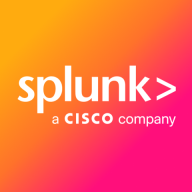

Splunk AppDynamics and Splunk ITSI compete in the application performance and IT service intelligence monitoring category. AppDynamics seems to have the upper hand due to its code-level visibility, while ITSI provides superior service dashboards and incident correlation.
Features: AppDynamics offers stack code performance tracing, deep JVM metrics visibility, and business transaction correlation across nodes. ITSI, however, provides comprehensive service dashboards, automatic incident correlation, and an effective service health score.
Room for Improvement: AppDynamics could improve its user interface, ease of integration with performance testing tools, and network monitoring capabilities. ITSI requires enhanced integration with third-party tools and improvements in predictive analytics, particularly in dashboard refresh times and setup simplification.
Ease of Deployment and Customer Service: AppDynamics supports various environments but may require significant initial setup. It is praised for its customer service. ITSI, although complex in setup, receives positive customer service feedback, despite occasional challenges due to its intricate structure.
Pricing and ROI: Both AppDynamics and ITSI come with high pricing models, making them challenging for smaller organizations. AppDynamics is seen as costly, but users justify the cost due to improved application performance and fast ROI, specifically for large enterprises. Similarly, ITSI's pricing is justified for its robust IT operations management and predictive analytics capabilities.
Overall, as a production gatekeeper, we achieve at least 50% efficiency immediately, with potential savings ranging from 60 to 70% as well, reinforcing why it is a popular tool in the banking industry.
According to errors, exceptions, and code-level details related to their application performance on a daily basis, the application development team tries to help with Splunk AppDynamics to reduce errors and exceptions, which helps the end users get application availability and feel more confident.
To understand the magnitude of it, when the company asked to replace Splunk AppDynamics with another tool, I indicated that for the proposed tool, we would need five people to do the analysis that Splunk AppDynamics enables me to do.
AppDynamics is much more helpful.
We got a contact, an account manager, to work directly with for technical support.
They help us resolve any issues raised by our team relating to operations, application instrumentation, or any other issues.
The technical support is excellent, and I would rate it at ten.
We have reached maximum capacity in our tier, and extending capacity has not been cost-effective from Splunk's perspective.
I would rate the scalability of Splunk AppDynamics as a nine out of ten.
I assess how Splunk AppDynamics scales with the growing needs of my organization as good, since we are growing and adding more servers.
Splunk is highly scalable, with the ability to expand efficiently.
It is necessary to conduct appropriate testing before deploying them in production to prevent potential outages.
There are no issues or bugs with the 20.4 version; it is very stable with no functionality or operational issues.
Splunk AppDynamics is superior to any alternative, including Dynatrace.
The setup, however, must be done correctly as incorrect deployment can lead to issues.
Splunk AppDynamics does not support the complete MELT framework, which includes metrics, events, logging, and tracing for the entire stack.
If AppDynamics could develop a means to monitor without an agent, it could significantly improve application performance and reduce potential problems.
A good integration with Splunk would be very interesting, as Splunk is a good product for logs, and that part is currently missing in Splunk AppDynamics.
I would appreciate additional features in the next release of Splunk ITSI (IT Service Intelligence) such as cloud infrastructure monitoring including CICDs, Kubernetes, and similar technologies.
Splunk ITSI could benefit from including more features that other solutions support, such as vulnerability management modules.
We completed a three-year deal for Splunk and for AppDynamics, which costs millions of dollars.
Customers have to pay a premium price, however, they receive considerable value from the product.
All these solutions at the moment are cheap, but it is like paying for insurance; you pay insurance to avoid major damage.
Splunk ITSI tends to be more expensive compared to some open-source solutions.
We have multiple tools, but end users prefer to use Splunk AppDynamics because their portal navigation is very simple and clear.
The real user monitoring and digital experience monitoring effectively track actual user experience with the applications, including page loading, interaction time for both desktop and mobile applications.
This is the best feature because, although you can't monitor a whole application at once, Splunk AppDynamics gives you the option that if there is any failure—simple failure regarding anything set up as per our use cases—you will get an alert.
The predictive analysis can give you proactive information about potential bottlenecks that can occur on applications, desk, storage, SQL servers, databases, or other systems.
Splunk ITSI allows for integration with threat intelligence, enabling my organization to correlate more than two events for generating alerts.
| Product | Market Share (%) |
|---|---|
| Splunk AppDynamics | 4.1% |
| Splunk ITSI (IT Service Intelligence) | 0.7% |
| Other | 95.2% |


| Company Size | Count |
|---|---|
| Small Business | 55 |
| Midsize Enterprise | 36 |
| Large Enterprise | 189 |
| Company Size | Count |
|---|---|
| Small Business | 11 |
| Midsize Enterprise | 9 |
| Large Enterprise | 32 |
Splunk AppDynamics enhances application performance monitoring with advanced diagnostics and real-time insights, offering seamless end-to-end transaction tracking and infrastructure visibility.
AppDynamics provides critical tools for businesses to analyze application behavior and performance. Through innovative features like transaction snapshot analysis and adaptable dashboards, users can quickly identify and address issues, ensuring high levels of system uptime and efficiency. It is designed to support complex environments including Kubernetes and AWS, enhancing user experience by detecting performance issues early. Despite needing improvements in network monitoring and integration, it remains a robust option for tracking application health.
What are the key features of AppDynamics?In industries like financial services and e-commerce, AppDynamics facilitates performance tracking across distributed systems, optimizing infrastructure to meet consumer demands. It excels in environments needing precise transaction monitoring and is pivotal in delivering high value and satisfaction.
Splunk IT Service Intelligence (ITSI) is a powerful analytics-driven monitoring and analytics solution that provides real-time insights into the health and performance of IT services.
It enables organizations to proactively identify and resolve issues, optimize service delivery, and improve overall IT operations. With its advanced machine learning capabilities, ITSI automatically detects anomalies, predicts future events, and prioritizes alerts based on business impact.
The solution offers a centralized view of IT services, allowing users to visualize and analyze data from multiple sources in a single dashboard. ITSI also provides customizable KPIs, service-level agreements (SLAs), and key performance indicators (KPIs) to measure and track service performance.
With its intuitive interface and powerful analytics capabilities, Splunk ITSI empowers IT teams to deliver reliable and efficient services, ensuring maximum uptime and customer satisfaction.
We monitor all Application Performance Monitoring (APM) and Observability reviews to prevent fraudulent reviews and keep review quality high. We do not post reviews by company employees or direct competitors. We validate each review for authenticity via cross-reference with LinkedIn, and personal follow-up with the reviewer when necessary.